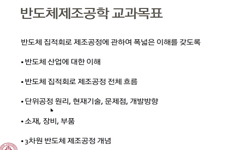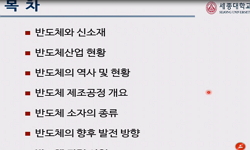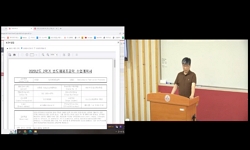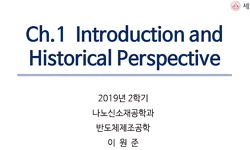This paper is a new review that aims to examine early material culture of Korea related with Wiman Joseon and Nangnang(Ch. Lelang) commandery, which is based on what was unearthed in the southeastern part of the Korean peninsula, the areas of Jinhan-B...
http://chineseinput.net/에서 pinyin(병음)방식으로 중국어를 변환할 수 있습니다.
변환된 중국어를 복사하여 사용하시면 됩니다.
- 中文 을 입력하시려면 zhongwen을 입력하시고 space를누르시면됩니다.
- 北京 을 입력하시려면 beijing을 입력하시고 space를 누르시면 됩니다.

論文(론문) : 위만조선 및 낙랑군과 진변한지역의 교섭 = The Interaction between Wiman Joseon, Nangnang Commandery and Jinhan-Byeonhan
한글로보기https://www.riss.kr/link?id=A99879814
- 저자
- 발행기관
- 학술지명
- 권호사항
-
발행연도
2013
-
작성언어
Korean
-
주제어
위만조선 ; 낙랑군 ; 진변한 ; 교역 ; 조공 ; Wiman Joseon ; Nangnang Commandery ; Jinhan-Byeonhan ; Trade ; Tribute
-
KDC
911.005
-
등재정보
KCI등재
-
자료형태
학술저널
-
수록면
1-35(35쪽)
- DOI식별코드
- 제공처
-
0
상세조회 -
0
다운로드
부가정보
다국어 초록 (Multilingual Abstract)
This paper is a new review that aims to examine early material culture of Korea related with Wiman Joseon and Nangnang(Ch. Lelang) commandery, which is based on what was unearthed in the southeastern part of the Korean peninsula, the areas of Jinhan-Byeonhan. Headed by the artefacts founded at Yeongcheon Eoeundong site in 1918, Japanese scholars in the colonial period considered the Han Chinese style artefacts in Jinhan-Byeonhan as decisive evidence of the advanced Han Chinese culture being disseminated abroad its territories to reach both the southeastern part of Korean peninsula and Japanese archipelago. Then, Since 1980s, a lot of Han Chinese style artefacts were excavated in other areas, including Dahori site in Changwon, Joyangdong site in Gyeongju, and Neukdo island site in Sacheon etc., which attracted the attention of academia. The possibility of the interaction between Wiman Joseon, Jinhan-Byoenhan may be inferred from the sheath of the Korean bronze dagger and the bronze bell excavated in the sites of Jinhan-Byoenhan, whose origins precede the establishment of Nangnang commandery. We assumed that Nangnang commandery involved the native people when interacting Janhan-Byeonhan, and utilized its network with the Wiman Joseon; and this opinion is supported by artefacts from the areas of Jinhan-Byeonhan, which collectively share styles that reflect those of the Han Chinese and those of Old Joseon― proof that North nomadic style had coexisted in areas of Jinhan-Byeonhan. By the mid and the late first century CE, it appears to be that the Old Joseon and Han Chinese style artefacts were rarely found in the Jinhan-Byeonhan areas, as indicated by the sharp decline of artefacts discovered from this time frame. It may be attributed to the fact that the controllability of Nangnang commandery was reinforced, following the suppression of the Wangjo`s rebellion, which would have dissolved the power of the native people. Perhaps, it may be an ahistroical approach to apply the medieval or even modern concepts of trade or tribute to the interaction amongst the Wiman Joseon, Nangnang commandery and Jinhan-Byeonhan areas. Instead, the interaction between Wiman Joseon and Jinhan-Byeonhan can be described as the following: the undifferentiation between the political negotiation and the economic trade, unestablishment of the unitary foreign negotiation, the internal redistribution system in Jinhan and Byeon, and the absence of the market exchange.
동일학술지(권/호) 다른 논문
-
論文(론문) : 고려시대 대외교역사 연구의 현황과 과제
- 이화사학연구소
- 이강한 ( Kang Hahn Lee )
- 2013
- KCI등재
-
論文(론문) : 식민지 지주제와 石川縣農業株式會社(석천현농업주식회사)
- 이화사학연구소
- 하지연 ( Ji Yeon Ha )
- 2013
- KCI등재
-
論文(론문) : 장선희의 삶과 활동: 독립운동 및 技藝교육
- 이화사학연구소
- 김성은 ( Sung Eun Kim )
- 2013
- KCI등재
-
論文(론문) : 宋代(송대) 檢驗(검험) 제도에서의 결과보고: “驗狀(험장)”類(류) 문서를 중심으로
- 이화사학연구소
- 崔碧茹
- 2013
- KCI등재




 KCI
KCI KISS
KISS






